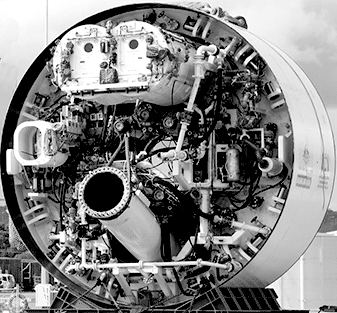Tunnel machine stuck
 A stuck tunnel boring machine has slowed progress on the Snowy 2.0 hydropower project.
A stuck tunnel boring machine has slowed progress on the Snowy 2.0 hydropower project.
Snowy Hydro says that on 15 May, the machine’s progress slowed due to very hard and abrasive rock.
The following day, excavation ceased entirely when the machine's shield became pinched by rock.
The Snowy 2.0 project team is expected to provide another update today.
Snowy Hydro sought immediate assistance from a specialist contractor experienced with similar Tunnel Boring Machine (TBM) issues in other Australian projects.
The contractor has been using high-pressure water jets to remove the rock blocking TBM Florence's shield.
Just days later, Snowy Hydro released an updated business case for the Snowy 2.0 project, highlighting key revenue streams and its value to the National Electricity Market (NEM). Marsden Jacob Associates (MJA) was re-engaged in mid-2023 to provide updated NEM modelling for the business case.
Significant updates to the project include a revised total cost of $12 billion and a delay in the commercial operation date to December 2028.
The project will deliver an additional 200 megawatts, bringing total capacity to 2,200 MW.
Snowy 2.0’s value to the NEM has increased from $2.8 billion in 2018 to $3 billion, reflecting its critical role in supporting decarbonisation and reliability targets.
Snowy Hydro has already contracted 1.75 gigawatts (GW) of wind and solar supply, enabling 2.9GW of renewable projects.
Snowy 2.0 will facilitate at least another 6GW of renewable energy by firming intermittent wind and solar energy into reliable electricity.
The project’s 350 gigawatt-hours (GWh) of energy storage addresses the Australian Energy Market Operator's (AEMO) 2022 Integrated System Plan, which identified 640GWh of storage as crucial for managing surplus renewable production and maintaining supply during low renewable output periods.
Located in the Snowy Mountains of New South Wales, its proponents say Snowy 2.0 is currently 57 per cent complete.
Despite the progress, Snowy 2.0 has faced challenges. Earlier in May, blasting caused a partial tunnel collapse. Additionally, TBM Florence's difficulties have raised concerns about the project timeline.
The ABC reports that Florence was mistakenly turned too sharply, causing part of the cutting head to become wedged.
Energy Minister Chris Bowen remains optimistic about meeting the revised 2028 completion date but expressed frustration over initial project management.
Authorities are considering purchasing a fourth TBM to expedite the headrace tunnel excavation, though no decision has been made.








 Print
Print